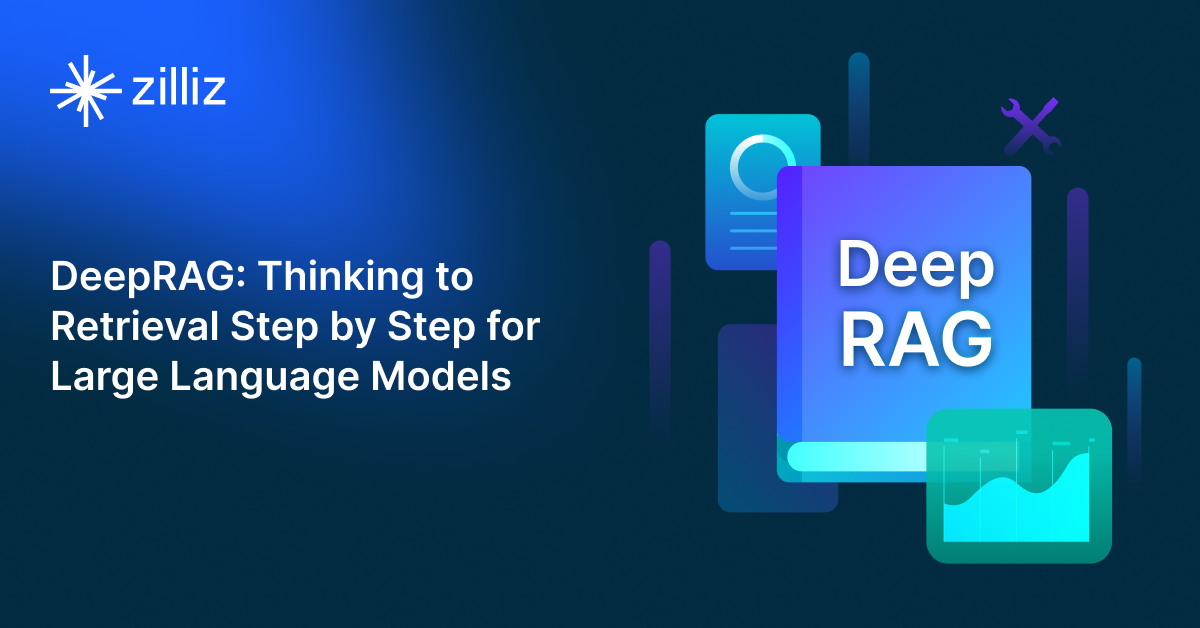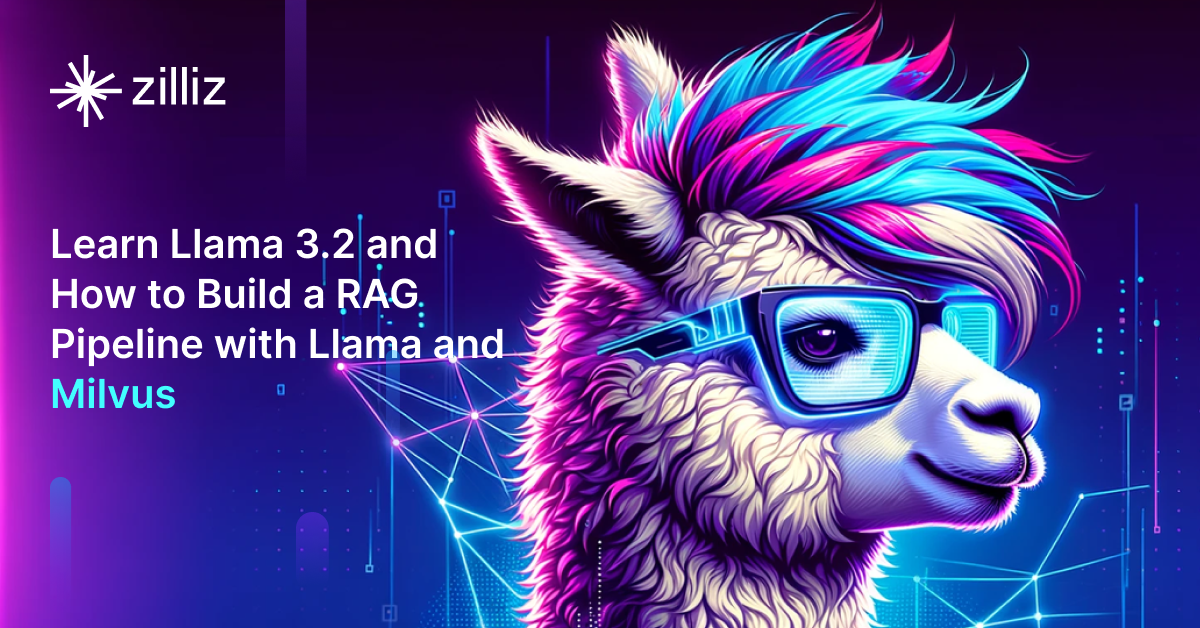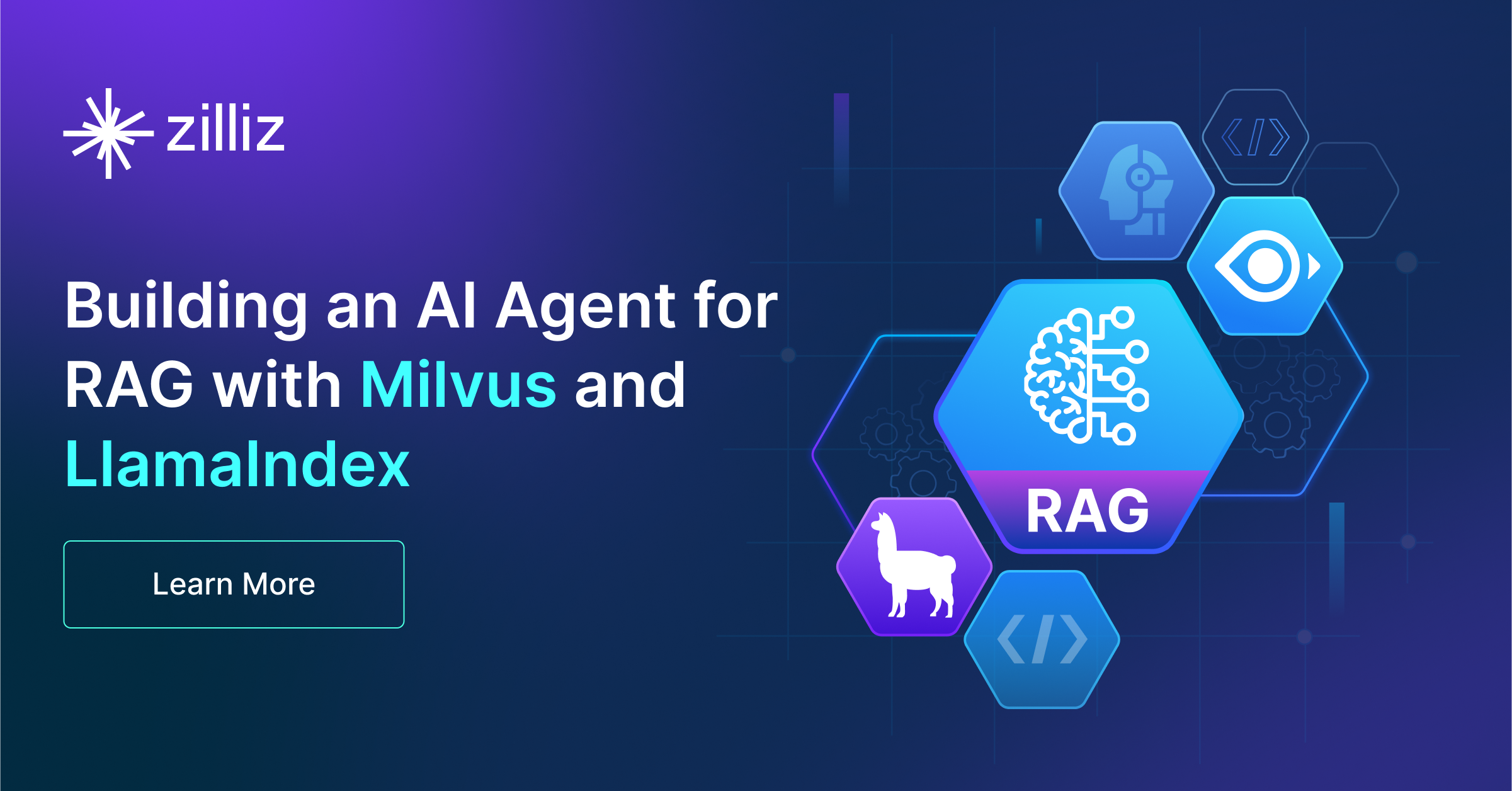Build RAG Chatbot with LangChain, Milvus, Google Vertex AI Claude 3 Opus, and Ollama paraphrase-multilingual
Introduction to RAG
Retrieval-Augmented Generation (RAG) is a game-changer for GenAI applications, especially in conversational AI. It combines the power of pre-trained large language models (LLMs) like OpenAI’s GPT with external knowledge sources stored in vector databases such as Milvus and Zilliz Cloud, allowing for more accurate, contextually relevant, and up-to-date response generation. A RAG pipeline usually consists of four basic components: a vector database, an embedding model, an LLM, and a framework.
Key Components We'll Use for This RAG Chatbot
This tutorial shows you how to build a simple RAG chatbot in Python using the following components:
- LangChain: An open-source framework that helps you orchestrate the interaction between LLMs, vector stores, embedding models, etc, making it easier to integrate a RAG pipeline.
- Milvus: An open-source vector database optimized to store, index, and search large-scale vector embeddings efficiently, perfect for use cases like RAG, semantic search, and recommender systems. If you hate to manage your own infrastructure, we recommend using Zilliz Cloud, which is a fully managed vector database service built on Milvus and offers a free tier supporting up to 1 million vectors.
- Google Vertex AI Claude 3 Opus: This advanced AI model integrates Google's cloud capabilities with Claude's robust language understanding. It excels in generating coherent and contextually relevant content across diverse applications, including chatbots, content creation, and data analysis. Ideal for organizations seeking scalable, high-performance solutions for natural language processing tasks.
- Ollama Paraphrase-Multilingual: This AI model specializes in generating paraphrases across multiple languages, enhancing content diversity and accessibility. Its strength lies in understanding context while altering sentence structure, making it ideal for translation services, content creation, and multilingual learning applications.
By the end of this tutorial, you’ll have a functional chatbot capable of answering questions based on a custom knowledge base.
Note: Since we may use proprietary models in our tutorials, make sure you have the required API key beforehand.
Step 1: Install and Set Up LangChain
%pip install --quiet --upgrade langchain-text-splitters langchain-community langgraph
Step 2: Install and Set Up Google Vertex AI Claude 3 Opus
pip install -qU "langchain[google-vertexai]"
# Ensure your VertexAI credentials are configured
from langchain.chat_models import init_chat_model
llm = init_chat_model("claude-3-opus@20240229", model_provider="google_vertexai")
Step 3: Install and Set Up Ollama paraphrase-multilingual
pip install -qU langchain-ollama
from langchain_ollama import OllamaEmbeddings
embeddings = OllamaEmbeddings(model="paraphrase-multilingual")
Step 4: Install and Set Up Milvus
pip install -qU langchain-milvus
from langchain_milvus import Milvus
vector_store = Milvus(embedding_function=embeddings)
Step 5: Build a RAG Chatbot
Now that you’ve set up all components, let’s start to build a simple chatbot. We’ll use the Milvus introduction doc as a private knowledge base. You can replace it with your own dataset to customize your RAG chatbot.
import bs4
from langchain import hub
from langchain_community.document_loaders import WebBaseLoader
from langchain_core.documents import Document
from langchain_text_splitters import RecursiveCharacterTextSplitter
from langgraph.graph import START, StateGraph
from typing_extensions import List, TypedDict
# Load and chunk contents of the blog
loader = WebBaseLoader(
web_paths=("https://milvus.io/docs/overview.md",),
bs_kwargs=dict(
parse_only=bs4.SoupStrainer(
class_=("doc-style doc-post-content")
)
),
)
docs = loader.load()
text_splitter = RecursiveCharacterTextSplitter(chunk_size=1000, chunk_overlap=200)
all_splits = text_splitter.split_documents(docs)
# Index chunks
_ = vector_store.add_documents(documents=all_splits)
# Define prompt for question-answering
prompt = hub.pull("rlm/rag-prompt")
# Define state for application
class State(TypedDict):
question: str
context: List[Document]
answer: str
# Define application steps
def retrieve(state: State):
retrieved_docs = vector_store.similarity_search(state["question"])
return {"context": retrieved_docs}
def generate(state: State):
docs_content = "\n\n".join(doc.page_content for doc in state["context"])
messages = prompt.invoke({"question": state["question"], "context": docs_content})
response = llm.invoke(messages)
return {"answer": response.content}
# Compile application and test
graph_builder = StateGraph(State).add_sequence([retrieve, generate])
graph_builder.add_edge(START, "retrieve")
graph = graph_builder.compile()
Test the Chatbot
Yeah! You've built your own chatbot. Let's ask the chatbot a question.
response = graph.invoke({"question": "What data types does Milvus support?"})
print(response["answer"])
Example Output
Milvus supports various data types including sparse vectors, binary vectors, JSON, and arrays. Additionally, it handles common numerical and character types, making it versatile for different data modeling needs. This allows users to manage unstructured or multi-modal data efficiently.
Optimization Tips
As you build your RAG system, optimization is key to ensuring peak performance and efficiency. While setting up the components is an essential first step, fine-tuning each one will help you create a solution that works even better and scales seamlessly. In this section, we’ll share some practical tips for optimizing all these components, giving you the edge to build smarter, faster, and more responsive RAG applications.
LangChain optimization tips
To optimize LangChain, focus on minimizing redundant operations in your workflow by structuring your chains and agents efficiently. Use caching to avoid repeated computations, speeding up your system, and experiment with modular design to ensure that components like models or databases can be easily swapped out. This will provide both flexibility and efficiency, allowing you to quickly scale your system without unnecessary delays or complications.
Milvus optimization tips
Milvus serves as a highly efficient vector database, critical for retrieval tasks in a RAG system. To optimize its performance, ensure that indexes are properly built to balance speed and accuracy; consider utilizing HNSW (Hierarchical Navigable Small World) for efficient nearest neighbor search where response time is crucial. Partitioning data based on usage patterns can enhance query performance and reduce load times, enabling better scalability. Regularly monitor and adjust cache settings based on query frequency to avoid latency during data retrieval. Employ batch processing for vector insertions, which can minimize database lock contention and enhance overall throughput. Additionally, fine-tune the model parameters by experimenting with the dimensionality of the vectors; higher dimensions can improve retrieval accuracy but may increase search time, necessitating a balance tailored to your specific use case and hardware infrastructure.
Google Vertex AI Claude 3 Opus optimization tips
Claude 3 Opus on Google Vertex AI is a high-performance model suited for complex reasoning tasks in RAG applications. Improve retrieval by employing multi-step document ranking to ensure only the most relevant data is passed to the model. Structure prompts effectively, placing key facts upfront to enhance response quality. Keep temperature low (0.1–0.2) for factual accuracy and fine-tune top-k/top-p for nuanced control. Utilize Google Vertex AI’s resource scaling to manage workload surges efficiently. Implement response caching for frequently accessed queries to optimize cost and speed. If using Opus alongside smaller models, deploy it selectively for queries requiring deep analytical capabilities while using lighter models for routine tasks.
Ollama Paraphrase-Multilingual Optimization Tips
To optimize the Ollama paraphrase-multilingual component in your Retrieval-Augmented Generation (RAG) setup, ensure that your training dataset is diverse and representative of the languages and dialects you intend to support, as this enhances paraphrasing accuracy across contexts. Use transfer learning with domain-specific data to improve performance on niche topics. Adjust hyperparameters such as learning rate and batch size based on validation results to enhance convergence. Implement a caching mechanism for frequently accessed paraphrases to reduce response time during retrieval. Monitor and analyze performance metrics regularly to identify bottlenecks, and consider fine-tuning the model periodically based on user feedback and new datasets to adapt to evolving language use.
By implementing these tips across your components, you'll be able to enhance the performance and functionality of your RAG system, ensuring it’s optimized for both speed and accuracy. Keep testing, iterating, and refining your setup to stay ahead in the ever-evolving world of AI development.
RAG Cost Calculator: A Free Tool to Calculate Your Cost in Seconds
Estimating the cost of a Retrieval-Augmented Generation (RAG) pipeline involves analyzing expenses across vector storage, compute resources, and API usage. Key cost drivers include vector database queries, embedding generation, and LLM inference.
RAG Cost Calculator is a free tool that quickly estimates the cost of building a RAG pipeline, including chunking, embedding, vector storage/search, and LLM generation. It also helps you identify cost-saving opportunities and achieve up to 10x cost reduction on vector databases with the serverless option.
 Calculate your RAG cost
Calculate your RAG cost
What Have You Learned?
By diving into this tutorial, you’ve unlocked the magic of building a powerful RAG system from the ground up! You’ve seen how LangChain acts as the glue that elegantly orchestrates the entire pipeline, seamlessly connecting your data flow between components. With Milvus as your vector database, you’ve learned to store and retrieve embeddings at lightning speed, turning unstructured data into searchable knowledge. Google Vertex AI’s Claude 3 Opus steps in as the brainy LLM, generating insightful, context-aware responses by synthesizing retrieved data with its advanced reasoning capabilities. And let’s not forget Ollama’s paraphrase-multilingual model—your secret weapon for crafting embeddings that capture nuanced meaning across languages, ensuring your system understands and adapts to diverse queries. Together, these tools create a dynamic RAG pipeline that’s both intelligent and scalable, ready to tackle everything from customer support chatbots to multilingual research assistants.
But you didn’t stop there! You’ve also picked up pro tips for optimizing performance, like fine-tuning chunk sizes for better retrieval and balancing cost with quality using the free RAG cost calculator included in the tutorial. These extras empower you to build smarter, faster, and more cost-effective solutions. Now that you’ve seen how these pieces fit together, imagine the possibilities—your next project could revolutionize how people interact with information. So go ahead, tweak the parameters, experiment with new datasets, and let your creativity run wild. The world of generative AI is yours to explore, and with these tools in your arsenal, you’re not just following trends—you’re setting them. Start building, keep iterating, and watch your ideas come to life! 🚀
Further Resources
🌟 In addition to this RAG tutorial, unleash your full potential with these incredible resources to level up your RAG skills.
- How to Build a Multimodal RAG | Documentation
- How to Enhance the Performance of Your RAG Pipeline
- Graph RAG with Milvus | Documentation
- How to Evaluate RAG Applications - Zilliz Learn
- Generative AI Resource Hub | Zilliz
We'd Love to Hear What You Think!
We’d love to hear your thoughts! 🌟 Leave your questions or comments below or join our vibrant Milvus Discord community to share your experiences, ask questions, or connect with thousands of AI enthusiasts. Your journey matters to us!
If you like this tutorial, show your support by giving our Milvus GitHub repo a star ⭐—it means the world to us and inspires us to keep creating! 💖
- Introduction to RAG
- Key Components We'll Use for This RAG Chatbot
- Step 1: Install and Set Up LangChain
- Step 2: Install and Set Up Google Vertex AI Claude 3 Opus
- Step 3: Install and Set Up Ollama paraphrase-multilingual
- Step 4: Install and Set Up Milvus
- Step 5: Build a RAG Chatbot
- Optimization Tips
- RAG Cost Calculator: A Free Tool to Calculate Your Cost in Seconds
- What Have You Learned?
- Further Resources
- We'd Love to Hear What You Think!
Content
Vector Database at Scale
Zilliz Cloud is a fully-managed vector database built for scale, perfect for your RAG apps.
Try Zilliz Cloud for Free


